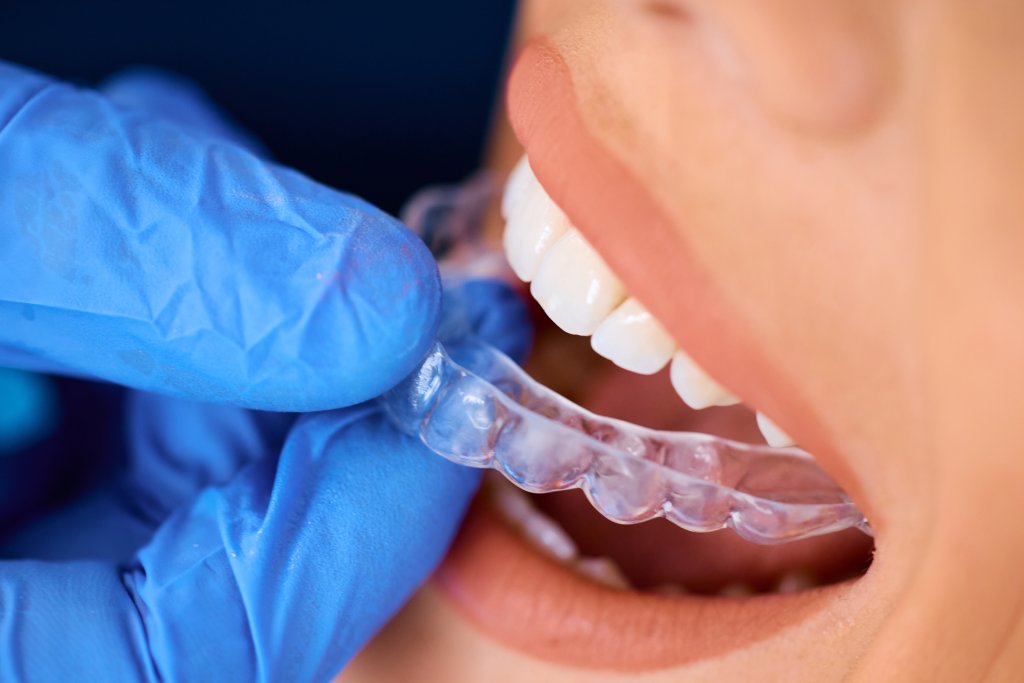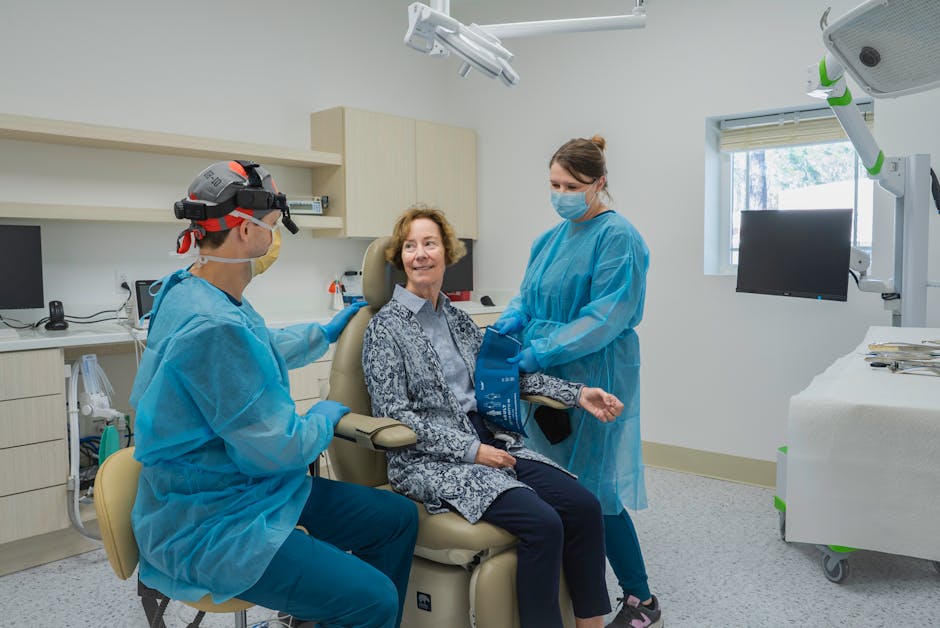Oral appliance for sleep apnea is a non-invasive treatment designed to help you breathe better at night and improve your overall health. This small, custom-made device fits comfortably over your teeth and works by gently repositioning your jaw to keep the airway open while you sleep. Here’s a quick breakdown of its benefits:
- Non-invasive and easy to use
- Improves breathing and reduces snoring
- Helps you feel more alert and energetic during the day
- Supports heart health and can improve your long-term wellness
Sleep apnea can disrupt not only your sleep but also your daily life. By choosing oral appliance therapy, you can expect to sleep more soundly and wake up feeling refreshed.
I’m D.D.S. Marta Milejczyk, and I’ve been practicing dentistry in Chicago’s north-west suburbs since 1997, with a special focus on oral health and comfort. My clinical experience has given me unique insights into the effectiveness of oral appliance for sleep apnea, helping many patients improve their sleep quality.

With the overview above, let’s dive deeper into understanding how these devices can improve your life.
Understanding Oral Appliances for Sleep Apnea
When it comes to managing sleep apnea, oral appliances are a popular choice due to their non-invasive nature and ease of use. These devices are designed to keep your airway open during sleep, helping reduce snoring and improve breathing. Let’s explore the two main types of oral appliances: Mandibular Advancement Devices (MADs) and Tongue-Stabilizing Devices (TSDs).
Mandibular Advancement Devices (MADs)
Mandibular Advancement Devices (MADs) are the most common type of oral appliance used for sleep apnea. They work by repositioning the jaw forward, which helps keep the airway open. Here’s how they work:
-
Jaw Repositioning: MADs gently push the lower jaw forward. This forward position helps increase the size of the upper airway, reducing the risk of obstruction during sleep.
-
Custom-Fit: These devices are typically custom-made to fit your mouth perfectly. A dentist will take an impression of your teeth to ensure the device is comfortable and effective.
-
Adjustable: Many MADs come with adjustable features, allowing for fine-tuning to achieve the optimal jaw position. This customization can improve comfort and effectiveness.
MADs are particularly beneficial for patients with mild to moderate sleep apnea. They are a great alternative for those who find CPAP machines uncomfortable or cumbersome.
Tongue-Stabilizing Devices (TSDs)
Tongue-Stabilizing Devices (TSDs) offer another approach to managing sleep apnea. Instead of moving the jaw, these devices focus on keeping the tongue in place:
-
Tongue Retention: TSDs use a suction mechanism to hold the tongue forward, preventing it from collapsing back into the throat and obstructing the airway.
-
Suction Mechanism: The suction keeps the tongue in a stable position, which helps maintain an open airway throughout the night.
-
Alternative Option: For individuals who cannot use MADs due to dental issues or discomfort, TSDs provide an effective alternative. They are often easier to fit and may be suitable for those with fewer dental structures.
Both MADs and TSDs have their unique advantages and can significantly improve sleep quality for those with sleep apnea. Choosing the right device often depends on personal comfort, the severity of sleep apnea, and specific dental considerations.

By understanding the functionality and benefits of these oral appliances, you can make an informed decision about which option is best suited for your needs. Next, we’ll explore the effectiveness and benefits of using oral appliance therapy compared to other treatments.
Effectiveness and Benefits of Oral Appliance Therapy
Comparison with CPAP Therapy
When it comes to treating sleep apnea, the oral appliance for sleep apnea offers a compelling alternative to traditional CPAP therapy. Let’s explore how these devices compare in terms of symptom improvement, compliance, and lifestyle integration.
Symptom Improvement
Both CPAP machines and oral appliances aim to keep your airway open during sleep. However, CPAP is generally more effective at reducing the severity of obstructive sleep apnea (OSA) as it provides a continuous flow of pressurized air. Studies show that CPAP reduces the apnea/hypopnea index (AHI) more significantly than oral appliances do. Yet, oral appliances like Mandibular Advancement Devices (MADs) can still offer substantial relief, particularly for those with mild to moderate OSA. About one-third of patients using MADs experience a complete resolution of symptoms, achieving an AHI of less than 5 events per hour.
Compliance Rates
A challenge with CPAP therapy is compliance. Many patients find the masks uncomfortable and the machines cumbersome, leading to inconsistent use. Oral appliances, on the other hand, tend to have higher compliance rates. Their compact and non-invasive design makes them more appealing for regular use. According to some studies, patients often prefer oral appliances over CPAP due to their comfort and ease of use, leading to better adherence over the long term.
Lifestyle Integration
For those who travel frequently or lead active lifestyles, oral appliances offer best convenience. Unlike CPAP machines, which require a power source and can be bulky, oral appliances are compact and easy to carry. This makes them an excellent option for maintaining your treatment regimen on the go.
CPAP Challenges and Combined Therapy
While CPAP is effective, it comes with its own set of challenges. The need for electricity, mask discomfort, and noise are common complaints. Some patients find a combined therapy approach beneficial, using CPAP at home and an oral appliance while traveling. This strategy can help reduce the amount of pressurized air needed from the CPAP machine, improving comfort and compliance.
Travel Convenience
Oral appliances shine when it comes to travel convenience. They’re lightweight, require no batteries or power, and fit easily into a small case. This makes them a practical choice for those who need to maintain their sleep apnea treatment while on the move.
In summary, while CPAP may offer superior effectiveness for severe cases of sleep apnea, the oral appliance for sleep apnea provides a comfortable and convenient alternative for many, especially those with mild to moderate OSA. With higher compliance rates and ease of integration into daily life, oral appliances are an attractive option for improving sleep quality.
Next, we’ll explore the different types of oral appliances available and how they are custom to meet individual needs.
Types of Oral Appliances
When it comes to selecting an oral appliance for sleep apnea, you have two main options: custom-made devices and over-the-counter (OTC) models. Each type has its own advantages and considerations, so let’s break them down.
Custom-Made Oral Appliances
Custom-made devices are crafted specifically for you. These appliances are created from dental impressions taken by a qualified dentist. This ensures a personalized fit custom to your unique dental structure.
-
Personalized Fit and Optimal Results: Custom devices are designed to fit snugly, offering maximum comfort and effectiveness. Research shows that these appliances are more effective in reducing the severity of obstructive sleep apnea compared to prefabricated options. They allow for precise adjustments, which can optimize jaw positioning for better airway management.
-
Dentist Referral: To get a custom-made device, you’ll need a referral from your doctor to a dentist specializing in sleep-related breathing disorders. This ensures that your device is made and adjusted by a professional who understands the nuances of sleep apnea treatment.
-
Fitting Process: The process begins with a dental impression, followed by the creation of a detailed model of your teeth. This model is used to fabricate an appliance that fits perfectly, ensuring comfort and effectiveness.
Over-the-Counter Devices
OTC devices, often known as “boil and bite” models, offer a more accessible entry point for those exploring oral appliances.
-
Boil and Bite Models: These devices are made from thermoplastic material. You soften them in hot water and then bite down to mold them to your teeth. While less precise than custom-made options, they can still provide relief for some users, particularly those with mild sleep apnea.
-
Accessibility and Limitations: OTC devices are readily available and typically cost less than custom-made options. However, they may not offer the same level of comfort or effectiveness. They lack the precision of custom adjustments, which can limit their ability to fully address sleep apnea symptoms.
-
Limitations: While convenient, OTC devices may not be suitable for everyone. They can be less durable and may not provide the same level of symptom relief as custom-made devices. Additionally, they may not be covered by insurance, unlike some custom options that are prescribed by a healthcare professional.
In summary, when choosing an oral appliance for sleep apnea, consider your specific needs, budget, and the severity of your condition. Custom-made devices offer the best fit and results, but OTC options provide a more accessible alternative for those exploring initial treatment.
Next, we’ll address some frequently asked questions about oral appliances for sleep apnea to help you make an informed decision.
Frequently Asked Questions about Oral Appliances for Sleep Apnea
Do Oral Appliances for Sleep Apnea Work?
Yes, oral appliances can be effective for treating obstructive sleep apnea (OSA), especially for those with mild to moderate cases. Success rates vary, but many users experience significant symptom reduction. According to research, these devices can decrease snoring and improve sleep quality by keeping the airway open. However, effectiveness can depend on the fit and proper use of the appliance.
Will Insurance Pay for Oral Appliances for Sleep Apnea?
Coverage options for oral appliances can vary. Many health insurance plans cover custom-made devices when prescribed for sleep apnea, but check with your provider. Some plans might require a formal OSA diagnosis and a doctor’s referral. Be aware that over-the-counter devices are usually not covered by insurance. Always verify your policy’s specifics to understand the extent of your health insurance coverage.
What Are the Side Effects of Using Oral Appliances?
Using oral appliances can lead to some short-term effects as you adjust. Common initial side effects include mild discomfort, excessive salivation, or dry mouth. These usually subside as you get used to the appliance.
Long-term considerations are generally minimal with a well-fitted device. However, some users might experience changes in bite alignment or jaw discomfort over time. Regular dental check-ups can help monitor and mitigate these issues. A study suggests that long-term side effects are uncommon with proper management and regular adjustments by a qualified dentist.
By understanding the potential benefits and drawbacks, you can make an informed choice about whether an oral appliance for sleep apnea is right for you.
Next, we’ll dive into the conclusion, highlighting how DP Dental Studio can support your journey to better sleep and health.
Conclusion
At DP Dental Studio, we understand that achieving restful sleep is crucial for your overall well-being. Our team is dedicated to helping you tackle sleep apnea with effective solutions like the oral appliance for sleep apnea. This non-invasive treatment can significantly improve your sleep quality and, by extension, your daily life.
Our patient-centered care approach ensures that each treatment plan is custom to meet your unique needs. We provide a welcoming environment where you can feel comfortable discussing your concerns and exploring treatment options. Our experienced team collaborates closely with insurance providers to maximize your benefits, making treatments more affordable.
By choosing DP Dental Studio, you’re not just opting for a solution to your sleep apnea; you’re joining a community that prioritizes your health and comfort. Our commitment to virtually painless treatments and prompt service means you can focus on what matters most—getting a good night’s sleep.
Ready to take the next step towards better sleep and improved health? Visit our Dental Sleep Medicine page to learn more about how we can help you sleep soundly. Let us be your partner in achieving a healthier, more energized life.

